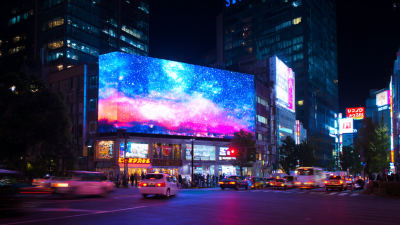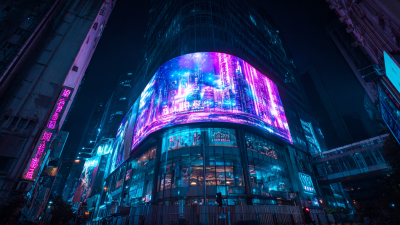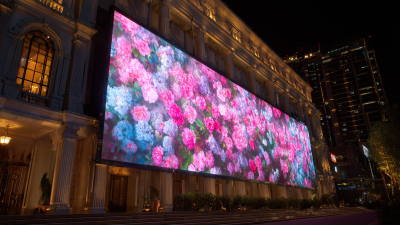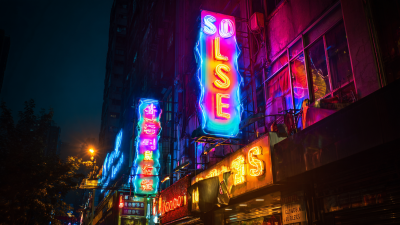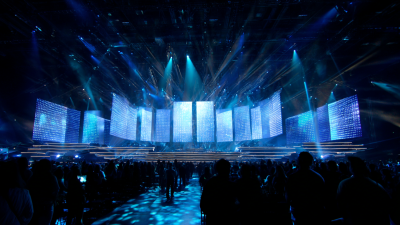
In today's rapidly evolving advertising landscape, the emergence of Led Screen Displays has revolutionized the way brands communicate with their audiences. A recent report by MarketsandMarkets indicates that the global digital signage market is expected to grow from $23.4 billion in 2021 to $34.8 billion by 2026, with Led Screen Displays making up a significant portion of this growth. The dynamic nature of Led Screen Displays allows for vibrant, high-resolution graphics and tailored content that can engage consumers more effectively than traditional static advertisements. Moreover, according to a Nielsen survey, 47% of consumers reported that digital signage catches their attention more than other forms of advertising. As marketers strive to optimize their strategies, understanding the impact of Led Screen Displays on audience engagement and brand visibility becomes imperative for achieving success in modern advertising initiatives.

The rise of LED screen displays in advertising has marked a revolutionary shift in how brands engage with their audience. According to a report by the Digital Signage Federation, the global digital signage market is expected to reach $31.71 billion by 2025, driven significantly by the adoption of LED technology. This growth underscores not just a trend but a transformation in the advertising landscape, where visual clarity and vibrancy play key roles in capturing consumer attention.
Additionally, with the integration of AI technologies alongside LED displays, advertisers can harness real-time data to customize content, ensuring it resonates with target demographics. A study from the NPD Group indicates that personalized advertising can increase conversion rates by up to 30%. As companies continue to invest in these advanced tools, the synergy between LED displays and artificial intelligence promises to enhance user experiences in unprecedented ways, positioning brands to better connect with consumers across diverse platforms.
The integration of LED screen displays into modern advertising strategies has transformed consumer engagement significantly. These vibrant and dynamic visual tools captivate audiences, making it easier for brands to cut through the noise of traditional advertising. Unlike static billboards, LED displays offer moving images and eye-catching colors that hold potential customers' attention longer, fostering a deeper emotional connection with the brand.
Moreover, research indicates that LED displays enhance brand visibility, often leading to improved recall among consumers. The high-definition graphics and strategic placement of LED screens in high-traffic areas make advertisements more memorable. Consumers are not just exposed to a brand but interact with the content on these screens, increasing the likelihood of brand retention. This amplified visibility is crucial in a marketplace saturated with information, enabling brands to create lasting impressions that translate into consumer loyalty and increased sales.
The rise of LED screen displays has significantly transformed modern advertising strategies, with recent industry insights highlighting key statistical trends in their usage across various marketing channels. According to a report by the Outdoor Advertising Association of America (OAAA), digital out-of-home (DOOH) advertising, which heavily relies on LED displays, experienced a staggering 43% growth in 2022 compared to the previous year. This surge underscores the increasing shift from traditional advertising mediums to dynamic, eye-catching LED technologies that captivate audiences effectively.
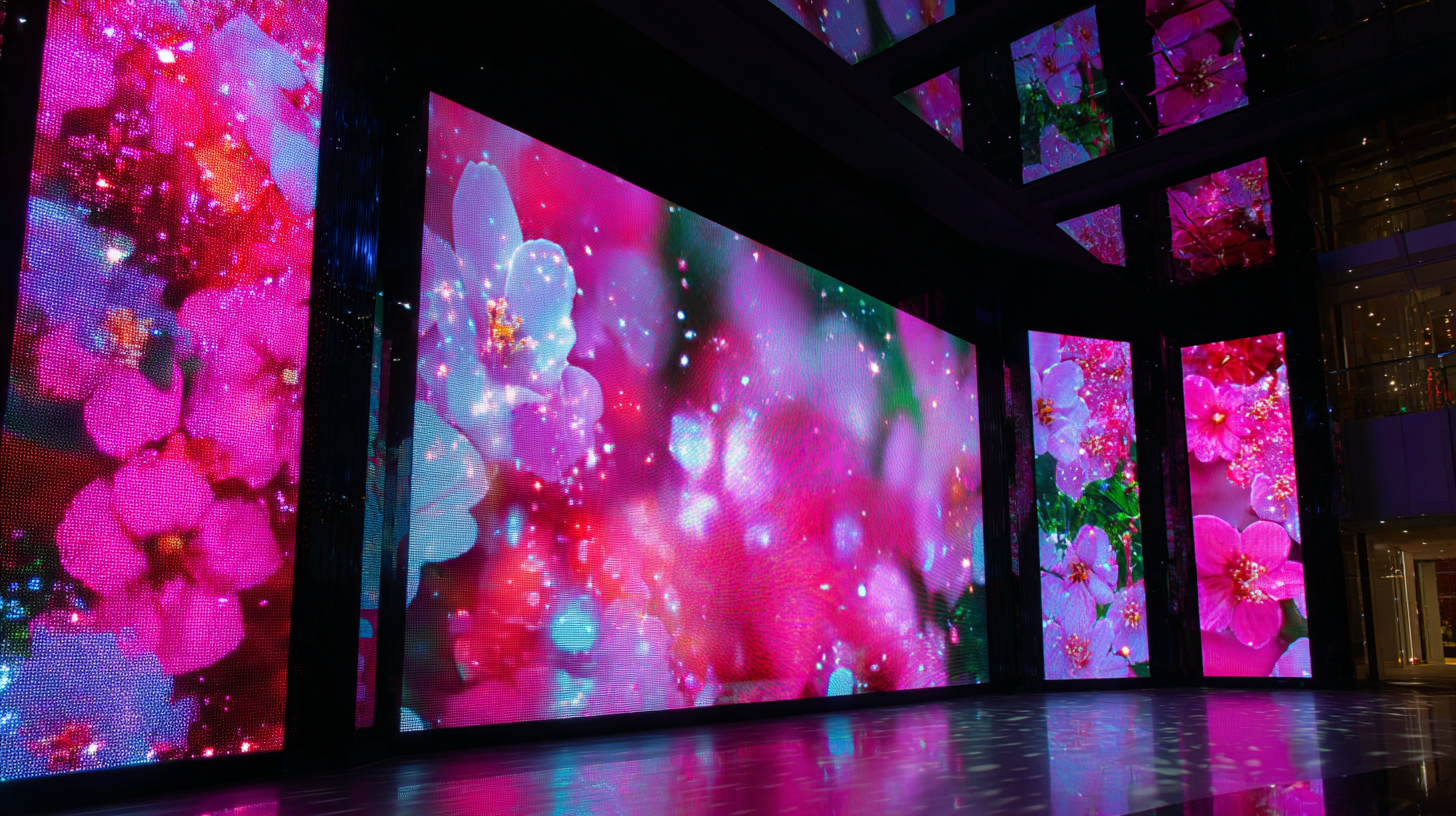
Moreover, a study by Statista indicates that the global market for digital signage, prominently featuring LED displays, is projected to reach $31.71 billion by 2026, growing at a compound annual growth rate (CAGR) of 8.2%. This growth is fueled by advancements in LED technology that allow for higher resolution and energy efficiency, making them an attractive option for marketers looking to enhance brand visibility. As businesses continue to embrace innovative advertising solutions, the integration of LED screens is set to remain a pivotal aspect of successful marketing strategies across diverse platforms.
In the realm of modern advertising, LED screen displays have revolutionized the way brands communicate with their audiences. A cost-benefit analysis of LED implementations reveals their potential to yield substantial returns on investment (ROI). Advertisers can effectively capture attention through vibrant visuals and dynamic content, which significantly enhances brand visibility. With decreasing costs of LED technology, businesses can leverage these displays not only for high-profile campaigns but also for ongoing promotional efforts.

Tips: To maximize ROI, focus on strategic placement of LED displays in high-traffic areas. Ensure that the content is engaging and tailored to your target audience, incorporating clear calls to action. Regularly assess the performance metrics and adjust your campaigns accordingly to stay relevant and impactful.
Investing in LED displays also allows for real-time updates, making it easier for brands to respond to trends or urgent announcements. This adaptability can result in higher engagement rates when compared to traditional static advertising methods. By analyzing customer interaction and feedback, businesses can refine their strategies for better results over time.
Tips: Use A/B testing to determine which types of content resonate most with your audience. Consider integrating QR codes or interactive elements that encourage audience interaction, enhancing the overall effectiveness of your advertising efforts.
The evolution of LED technology continues to reshape the landscape of advertising strategies, unlocking new possibilities for engagement and creativity. As brightness, energy efficiency, and color accuracy improve, advertisers are set to leverage these advancements to produce more dynamic and immersive experiences. From flexible displays that can adapt to various environments to transparent screens that seamlessly blend into architecture, the future of LED advertising promises to challenge the conventional boundaries of marketing.
Moreover, the integration of augmented reality (AR) and smart connectivity into LED displays is expected to revolutionize consumer interactions. By utilizing real-time data and personalized content, advertisers can create tailored experiences that resonate with individual preferences. This convergence of technology will not only capture attention but also foster deeper connections between brands and consumers. As we look to the future, the potential for LED technology to transform advertising strategies remains vast, paving the way for innovative campaigns that captivate and engage audiences like never before.
| Dimension | Current Trends | Future Innovations | Impact on Advertising |
|---|---|---|---|
| Brightness Levels | High brightness for visibility in daylight | Adaptive brightness technology | Improved engagement in diverse environments |
| Content Customization | Targeted ads based on location | Real-time content adaptation | Higher relevance increases conversion rates |
| Technology Integration | Use of QR codes to access offers | AI-driven content generation | Augmented interactivity leading to brand loyalty |
| Eco-friendliness | Adoption of energy-efficient LED | Solar-powered outdoor displays | Positive brand perception among eco-conscious consumers |
| Interactivity | Limited interactive options | Immersive experiences through AR | Enhanced user engagement and brand connection |
